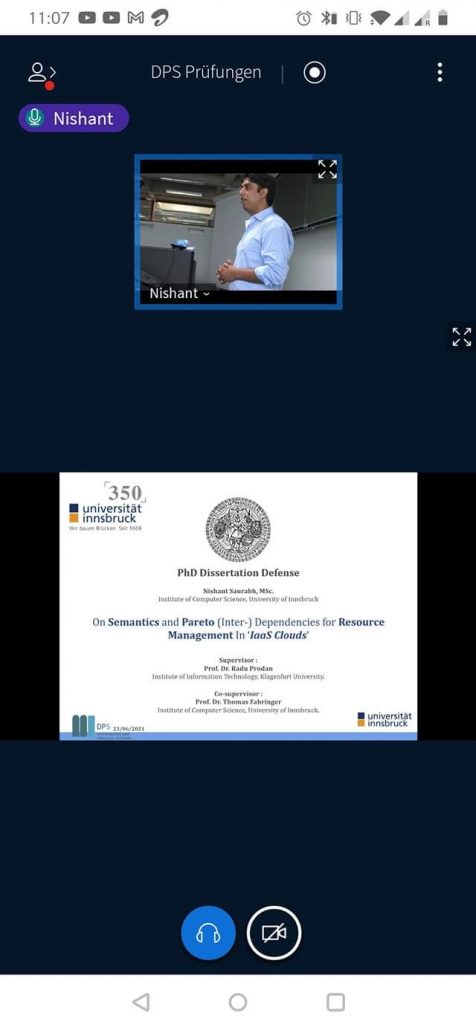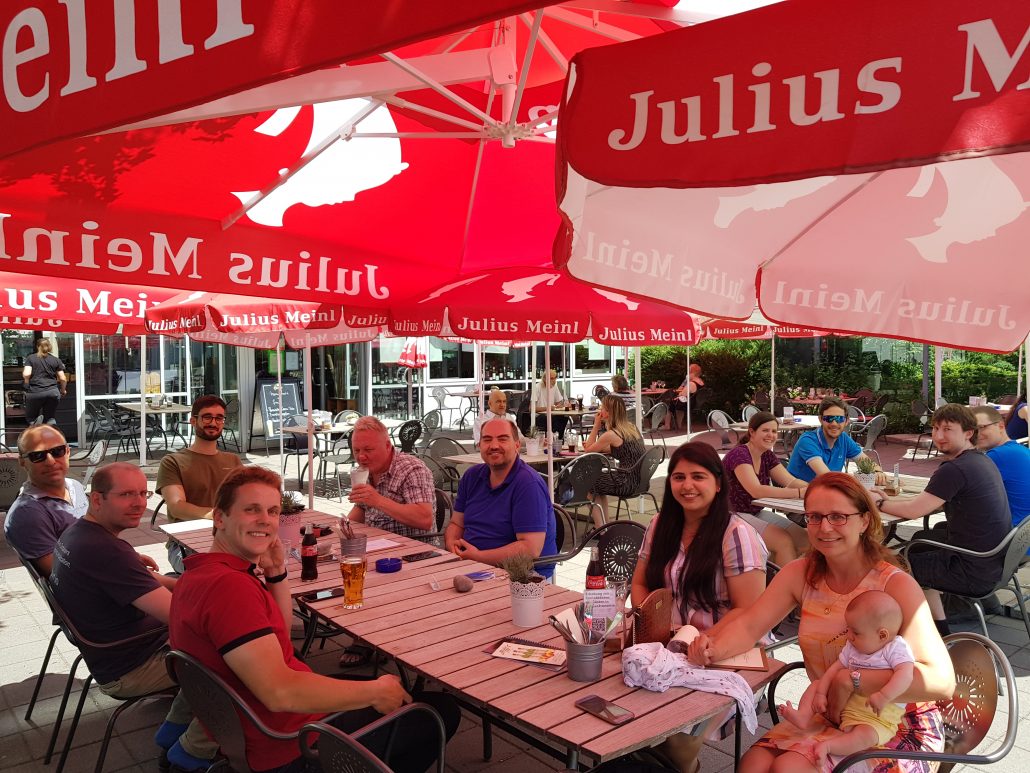Authors: Shajulin Benedict, Prateek Agrawal, Radu Prodan
Link: Advanced Informatics for Computing Research, CCIS-Springer, 4th ICAICR 2020, Vol. 1393
Abstract: The push for agile pandemic analytic solutions has attained development-stage software modules of applications instead of functioning as full-fledged production-stage applications – i.e., performance, scalability, and energy-related concerns are not optimized for the underlying computing domains. And while the research continues to support the idea that reducing the energy consumption of algorithms improves the lifetime of battery-operated machines, advisable tools in almost any developer setting, an energy analysis report for R-based analytic programs is indeed a valuable suggestion. This article proposes an energy analysis framework for R-programs that enables data analytic developers, including pandemic-related application developers, to analyze the programs. It reveals an energy analysis report for R programs written to predict the new cases of 215 countries using random forest variants. Experiments were carried out at the IoT cloud research lab and the energy efficiency aspects were discussed in the article. In the experiments, ranger-based prediction program consumed 95.8 J.
HTTP Adaptive Streaming – Quo Vadis?
Christian Timmerer, Tuesday, June 29, 2021
35th Picture Coding Symposium (PCS) 2021
Abstract: Video traffic on the Internet is constantly growing; networked multimedia applications consume a predominant share of the available Internet bandwidth. A major technical breakthrough and enabler in multimedia systems research and of industrial networked multimedia services certainly was the HTTP Adaptive Streaming (HAS) technique. This resulted in the standardization of MPEG Dynamic Adaptive Streaming over HTTP (MPEG-DASH) which, together with HTTP Live Streaming (HLS), is widely used for multimedia delivery in today’s networks. Existing challenges in multimedia systems research deal with the trade-off between (i) the ever-increasing content complexity, (ii) various requirements with respect to time (most importantly, latency), and (iii) quality of experience (QoE). Optimizing towards one aspect usually negatively impacts at least one of the other two aspects if not both.
This situation sets the stage for our research work in the ATHENA Christian Doppler (CD) Laboratory (Adaptive Streaming over HTTP and Emerging Networked Multimedia Services; https://athena.itec.aau.at/), jointly funded by public sources and industry.
In this talk, we will present selected novel approaches and research results of the first year of the ATHENA CD Lab’s operation. We will highlight HAS-related research on (i) multimedia content provisioning (machine learning for video encoding); (ii) multimedia content delivery (support of edge processing and virtualized network functions for video networking); (iii) multimedia content consumption and end-to-end aspects (player-triggered segment retransmissions to improve video playout quality); and (iv) novel QoE investigations (adaptive point cloud streaming). We will also put the work into the context of the international multimedia systems research.
Conference: https://escience2021.org/
Title: Where to Encode: A Performance Analysis of x86 and Arm-based Amazon EC2 Instances
Authors: Roland Mathá, Dragi Kimovski, Anatoliy Zabrovskiy, Christian Timmerer and Radu Prodan
Abstract: Video streaming became an undivided part of the Internet. To efficiently utilise the limited network bandwidth it is essential to encode the video content. However, encoding is a computationally intensive task, involving high-performance resources provided by private infrastructures or public clouds. Public clouds, such as Amazon EC2, provide a large portfolio of services and instances optimized for specific purposes and budgets. The majority of Amazon’s instances use x86 processors, such as Intel Xeon or AMD EPYC. However, following the recent trends in computer architecture, Amazon introduced Arm based instances that promise up to 40% better cost performance ratio than comparable x86 instances for specific workloads. We evaluate in this paper the video encoding performance of x86 and Arm instances of four instance families using the latest FFmpeg version and two video codecs. We examine the impact of the encoding parameters, such as different presets and bitrates, on the time and cost for encoding. Our experiments reveal that Arm instances show high time and cost saving potential of up to 33.63% for specific bitrates and presets, especially for the x264 codec. However, the x86 instances are more general and achieve low encoding times, regardless of the codec.
Title: Handover Authentication Latency Reduction using Mobile Edge Computing and Mobility Patterns
Authors: Fatima Abdullah, Dragi Kimovski, Radu Prodan, and Kashif Munir
Abstract: With the advancement in technology and the exponential growth of mobile devices, network traffic has increased manifold in cellular networks. Due to this reason, latency reduction has become a challenging issue for mobile devices. In order to achieve seamless connectivity and minimal disruption during movement, latency reduction is crucial in the handover authentication process. Handover authentication is a process in which the legitimacy of a mobile node is checked when it crosses the boundary of an access network. This paper proposes an efficient technique that utilizes mobility patterns of the mobile node and mobile Edge computing framework to reduce handover authentication latency. The key idea of the proposed technique is to categorize mobile nodes on the basis of their mobility patterns. We perform simulations to measure the networking latency. Besides, we use queuing model to measure the processing time of an authentication query at an Edge servers. The results show that the proposed approach reduces the handover authentication latency up to 54% in comparison with the existing approach.
Link: https://c3.itec.aau.at/index.php/paper-accepted-elsevier-computing/
Authors:Yasir Noman Khalid, Muhammad Aleem, Usman Ahmed, Radu Prodan, Muhammad Arshad Islam & Muhammad Azhar Iqbal
Abstract: Employing general-purpose graphics processing units (GPGPU) with the help of OpenCL has resulted in greatly reducing the execution time of data-parallel applications by taking advantage of the massive available parallelism. However, when a small data size application is executed on GPU there is a wastage of GPU resources as the application cannot fully utilize GPU compute-cores. There is no mechanism to share a GPU between two kernels due to the lack of operating system support on GPU. In this paper, we propose the provision of a GPU sharing mechanism between two kernels that will lead to increasing GPU occupancy, and as a result, reduce execution time of a job pool. However, if a pair of the kernel is competing for the same set of resources (i.e., both applications are compute-intensive or memory-intensive), kernel fusion may also result in a significant increase in execution time of fused kernels. Therefore, it is pertinent to select an optimal pair of kernels for fusion that will result in significant speedup over their serial execution. This research presents FusionCL, a machine learning-based GPU sharing mechanism between a pair of OpenCL kernels. FusionCL identifies each pair of kernels (from the job pool), which are suitable candidates for fusion using a machine learning-based fusion suitability classifier. Thereafter, from all the candidates, it selects a pair of candidate kernels that will produce maximum speedup after fusion over their serial execution using a fusion speedup predictor. The experimental evaluation shows that the proposed kernel fusion mechanism reduces execution time by 2.83× when compared to a baseline scheduling scheme. When compared to state-of-the-art, the reduction in execution time is up to 8%.
Link: https://link.springer.com/article/10.1007/s00607-021-00958-2
Our project „ADAPT“ started in March 2021, during the most critical phase of the COVID-19 outbreak in Europe. The demand for Personal Protective Equipment (PPE) from each country’s health care system has surpassed national stock amounts by far.
Learn more about it in an interview with Univ.-Prof. DI Dr. Radu Aurel Prodan in University Klagenfurt´s journal „ad astra“ (pdf).
At IEEE International Conference on Image Processing (ICIP) on September 19-22, 2021, Alaska, USA.
Authors: Vignesh V Menon (Alpen-Adria-Universität Klagenfurt), Hadi Amirpour (Alpen-Adria-Universität Klagenfurt), Mohammad Ghanbari (School of Computer Science and Electronic Engineering, University of Essex, Colchester, UK), and Christian Timmerer (Alpen-Adria-Universität Klagenfurt).
Abstract: Video delivery over the Internet has been becoming a commodity in recent years, owing to the widespread use of DASH. The DASH specification defines a hierarchical data model for Media Presentation Descriptions (MPDs) in terms of segments. This paper focuses on segmenting video into multiple shots for encoding in VoD HAS applications.
This paper proposes a novel DCT feature-based shot detection and successive elimination algorithm for shot detection algorithm and benchmark the algorithm against the default shot detection algorithm of the x265 implementation of the HEVC standard. Our experimental results demonstrate that the proposed feature-based pre-processor has a recall rate of 25% and an F-measure of 20% greater than the benchmark algorithm for shot detection.
Keywords: HTTP Adaptive Streaming, Video-on-Demand, Shot detection, multi-shot encoding.
Title: The ARTICONF Approach to Decentralised Car-sharing
Authors: Nishant Saurabh (UNI-KLU), Carlos Rubia (Agilia), Anandakumar Palanisamy (BY), Spiros Koulouzis (UvA), Mirsat Sefidanoski (UIST), Antorweep Chakravorty (UiS), Zhiming Zhao (UvA), Aleksandar Karadimce (UIST), Radu Prodan (UNI-KLU)
Abstract: Social media applications are essential for next generation connectivity. Today, social media are centralized platforms with a single proprietary organization controlling the network and posing critical trust and governance issues over the created and propagated content.
The ARTICONF project funded by the European Union’s Horizon 2020 program researches a decentralized social media platform based on a novel set of trustworthy, resilient and globally sustainable tools that address privacy, robustness and autonomy-related promises that proprietary social media platforms have failed to deliver so far. This paper presents the ARTICONF approach to a car-sharing decentralized application (DApp) use case, as a new collaborative peer-to-peer model providing an alternative solution to private car ownership. We describe a prototype implementation of the car-sharing social media DApp and illustrate through real snapshots how the different ARTICONF tools support it in a simulated scenario.
![]()
Conference info: Picture Coding Symposium (PCS), 29 June-2 July 2021, Bristol, UK
Conference Website: https://pcs2021.org
Authors: Vignesh V Menon (Alpen-Adria-Universität Klagenfurt), Hadi Amirpour (Alpen-Adria-Universität Klagenfurt), Christian Timmerer (Alpen-Adria-Universität Klagenfurt, Bitmovin), and Mohammad Ghanbari (School of Computer Science and Electronic Engineering, University of Essex, Colchester, UK)
Abstract: Since video accounts for the majority of today’s internet traffic, the popularity of HTTP Adaptive Streaming (HAS) is increasing steadily. In HAS, each video is encoded at multiple bitrates and spatial resolutions (i.e., representations) to adapt to a heterogeneity of network conditions, device characteristics, and end-user preferences. Most of the streaming services utilize cloud-based encoding techniques which enable a fully parallel encoding process to speed up the encoding and consequently to reduce the overall time complexity. State-of-the-art approaches further improve the encoding process by utilizing encoder analysis information from already encoded representation(s) to improve the encoding time complexity of the remaining representations. In this paper, we investigate various multi-encoding algorithms (i.e., multi-rate and multi-resolution) and propose novel multi- encoding algorithms for large-scale HTTP Adaptive Streaming deployments. Experimental results demonstrate that the proposed multi-encoding algorithm optimized for the highest compression efficiency reduces the overall encoding time by 39% with a 1.5% bitrate increase compared to stand-alone encodings. Its optimized version for the highest time savings reduces the overall encoding time by 50% with a 2.6% bitrate increase compared to stand-alone encodings.
Keywords: HTTP Adaptive Streaming, HEVC, Multi-rate Encoding, Multi-encoding.









